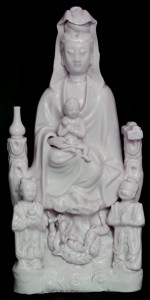
Other than Catherine of Austria and her kunstkammer, I do not know any other female patron of the arts. Thus I begin my research and had a few names that I could find on the net. I ended up choosing “Isabella d’Este” for this topic.
Isabella d’Este was known for her role as patron of Renaissance learning, arts and literature. Thus obtaining the name as the First Lady of the Renaissance and the First Lady of the World. Her husband, Francesco Gonzaga, together with Isabella d’Este, supported many of the Renaissance’s painters, writers, poets, and musicians. Francesco Gonzaga wasn’t all the interested in arts and literature. However despite that, he was a generous patron with Isabella d’Este who loves arts and literature. Both husband and wife supported artist such as Leonardo, Perugino, Battista Spagnoli, Raphael, Andrea Mantegna, Castiglione and Bandello.
Their support wasn’t limited to artist only but also writers such as Ariosto and Baldassare Castiglione, architect like Giulio Romano, and even musicians like Bartolomeo Troboncino and Marchetto Cara.
Over the years, Isabella d’Este collected many art works and antiquities for her interest. The amount that she collected ended up creating a space that seems like an art museum. Some of the things she has are her commissioning work.
Isabella d’Este being a patron could also help make artists become famous. One artist that became famous because of her is Leonardo. Leonardo was one of the artist that Isabella d’Este really admired his work. It started when she admired the portrait of her brother in law in Milan who was drawn by Leonardo and at that point she hope that Leonardo would paint her as well. By chance, Leonardo worked with her for a year and produces his black chalk Sanguine cartoon of Isabella.
I find her different from other art patrons in the way that she had a tradition to have a competition with her artists. She would have one artist worked on her portrait while another artist producing her portrait of his own style. And once done she would choose the one she likes best. This creates a different level of respect for one another as an artist and understands where one skill level is. While other patron would just get artwork to display in their homes or just for collection purposes.
Reference:
http://nhcs.wikispaces.com/Renaissance+Patrons
http://womenshistory.about.com/od/medievalitalianwomen/a/isabella_d_este.htm
http://italianrenaissanceresources.com/units/unit-8/essays/isabella-deste-collects/






 Art is a form of expression for a person’s feelings at the moment he is doing an art work. It captures the time and emotions that the artist felt. Is like an dimension that leads one to another time period.
Art is a form of expression for a person’s feelings at the moment he is doing an art work. It captures the time and emotions that the artist felt. Is like an dimension that leads one to another time period.